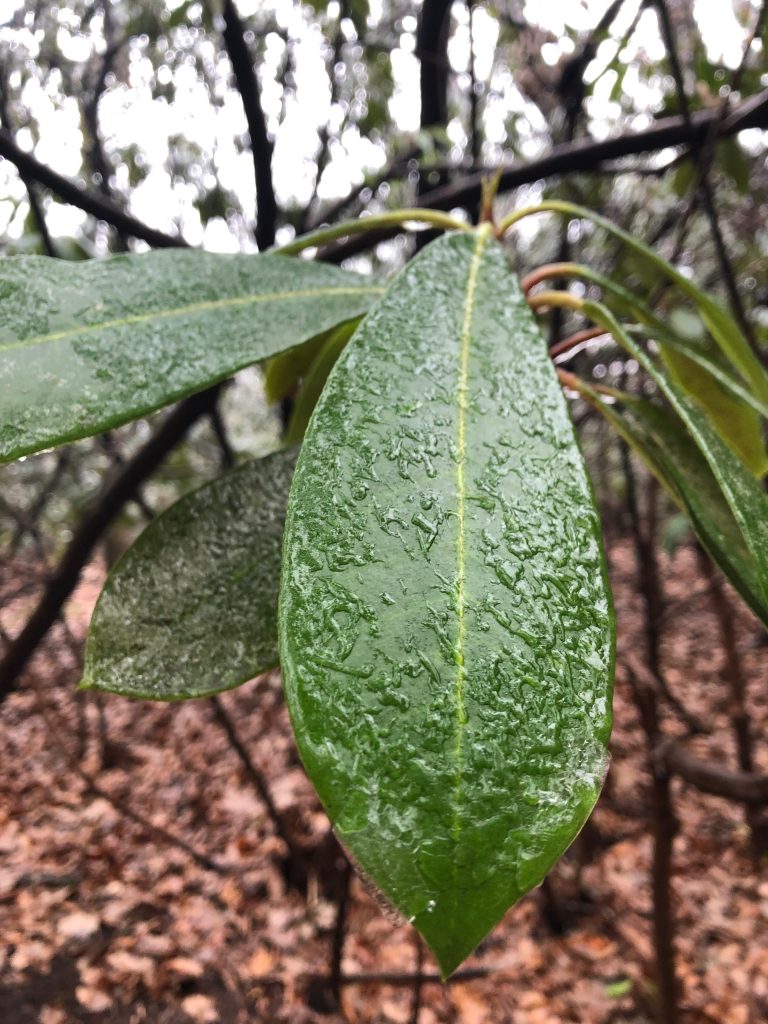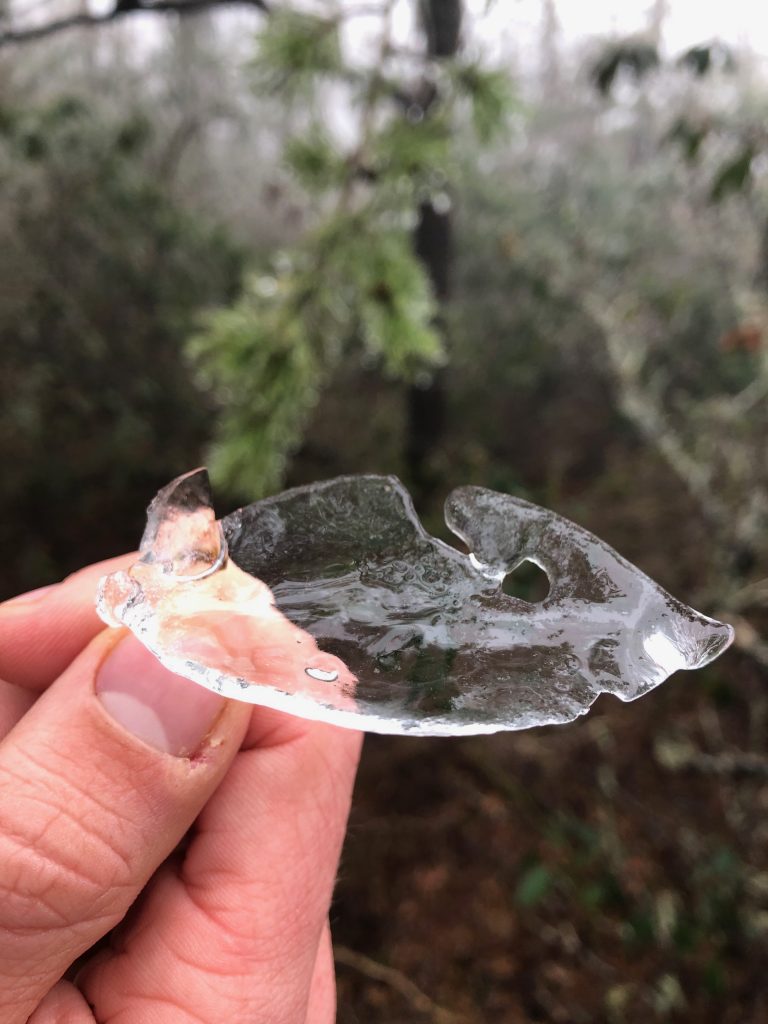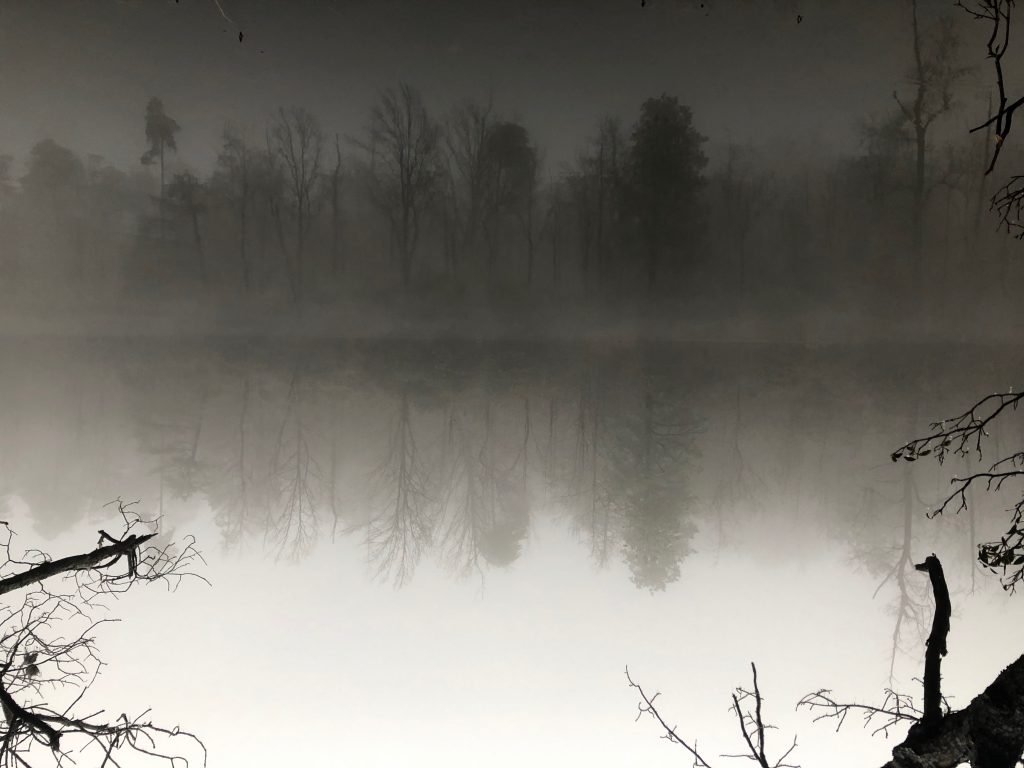Where I stand now, the Earth was once in turmoil. Approximately 500 million years ago, the tectonic plates containing Africa and North America converged. This act triggered the disappearance of the Iapetus sea and pushed the eastern edge of North America thousands of feet above sea level. Incredible pressure underneath this collision metamorphosed sandstones into the erosion-resistant quartzite where I now plant my feet.
High atop the exposed surface of Cook’s Wall, I stare down into the void of shadowed trees and fog below. My eye lingers on one pine in particular. It rests on a jagged upwelling of quartzite, clinging somewhat desperately to a small patch of dirt on the rock’s exterior. The central trunk emerges triumphantly from the uncertain ground, held upright from the vast array of roots unseen to my eyes. I trace the amber bark upward until the tree splits into two adjacent branches, forcing my attention to widen as to capture its entirety. Their heaviness consumes me. An icy haze glistens on the tree’s exterior as if to distinguish it from all else. The small rounded pinecones interspersed on the assortment of evergreen needles droop and sag under the blanket of ice. Despite the ground being barren of snow, freezing rain has hardened the leaves, pressured the forest, and unequivocally dominated the winter landscape.

Cook’s Wall in Fog – 2/18/19
For the next hour, I lost myself in that wintry forest. My boots crunched along the semi-frozen trail while my arms braced against rigid unbending trunks to either side. Every now and then, my shoulders would collide with the rime of mountain laurel or rhododendron. Recently high winds have blown the dripping rain backwards against its downward flow. Coupled with near-freezing temperatures, the droplets have frozen in elegant curves nearly parallel to the leaves. I quickly got into the habit of grabbing the ice by its edge and carefully pulling the covering away. I would painstakingly focus on peeling it away as I would an orange, generally ending with its consumption as a ‘brief refreshment’.

After repeating the action on

Shading my eyes from the glare of the setting sun, I descended along slippery trails into the rhododendron forests. Here the ice clung to the trees less readily, often fragmenting and crackling under short gusts of wind. I bounded over roots, scrambled up slippery gneiss outcroppings, and supported myself on slender hickory’s as the path twisted onward. I emerged out of a thicket into a new-growth forest where much of the understory had been cleared away. Damp leaves composed the base while bright green moss served as beacons through the misty trees. I took a moment to stop, planting my feet firmly into the mud, and simply listen. Absolute silence. Not even the distant hum of a plane disturbed this utter tranquility.

All of a sudden, the stillness was broken. To my right, I could make out a distant

Just like that, my union with the woodpecker vanished; its world remaining just out of my grasp. I realized that something is only ever given in nature; nothing is taken for granted. Though I felt satisfied, grateful, and content just being in its presence, I knew I had to return to my own world in due time. Evening’s approach did not falter but my haste certainly had, so with a short shuffle, I pressed onward against night’s formidable grip on the darkening valley.
” I wonder how they know, cause they don’t die if they don’t grow”